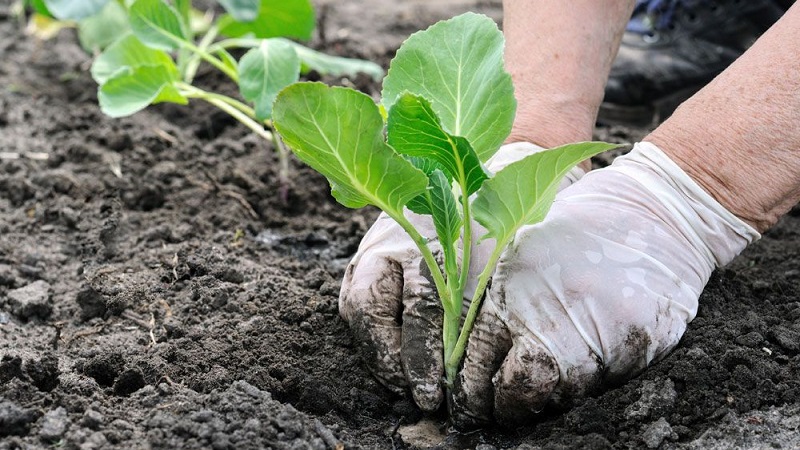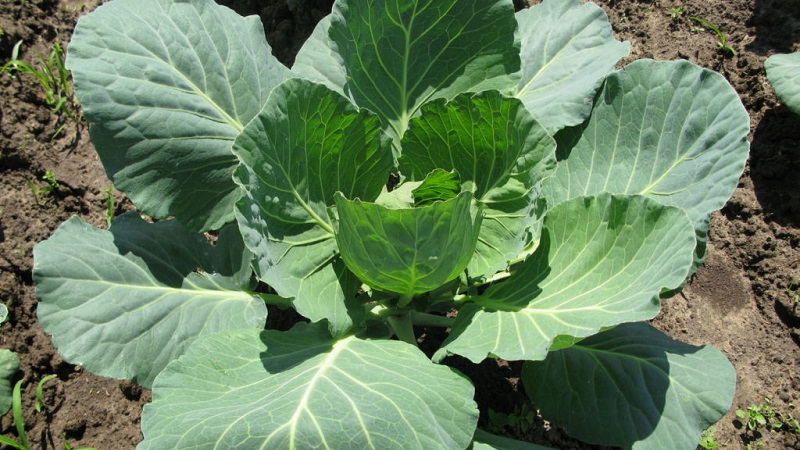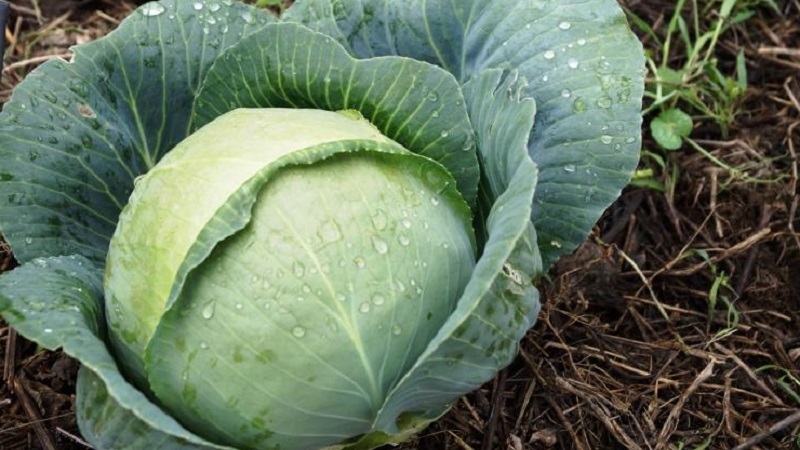Why cabbage is not tied to the head and what to do to fix it
In order for the cabbage heads to turn out large and large, you need to plant the seedlings on time and choose the right place for the vegetable. But it so happens that the heads of cabbage are not tied. To correct the situation, you need to find the cause and eliminate it. Read about why the cabbage is not tied into the head of cabbage and what to do in this case, read our article.
The content of the article
Signs that cabbage does not tie well
To understand whether the head of cabbage is forming, it is enough to look at the center. The main sign that most likely there will be no ovary is the formation of a rosette of small leaves in the very middle... In addition, the stem grows upward, and the leaves in the middle may show signs of decay or drying.

In some cases, instead of one large head of cabbage, several small, which is also considered a deviation from the norm.
Why cabbage does not tie heads of cabbage: reasons
The reasons for stopping the vegetative period in cabbage can be different., from improper care to plant damage by various pests and diseases.
Cabbage planted at the wrong time
Cabbage has a large number of varieties, which are divided into groups - early maturing, mid-maturing and late-maturing. If you plant a culture without taking into account the recommendations, this may cause the absence of ovaries.
Planting dates for cabbage are as follows:
- early - from April 25 to May 5;
- mid-season - the last two weeks of May;
- late - from the end of May to 5 June.
The risk of non-compliance is particularly high landing dates early varieties... If you do this before the recommended period, the cabbage will die from frost.

Lack of light
Cabbage is an extremely light-requiring vegetable, therefore do not plant it in areas where there is no direct sunlight for most of the day... It is not recommended to place tall plants near it, blocking the sunlight.
Micronutrient deficiency
The reason for the lack of ovaries in a culture may be a lack of necessary trace elements in the soil. The deficit is determined by the following criteria:
- Small heads of cabbage with dried edges and areas near leaf veins indicate a potassium deficiency.
- The head of cabbage or cauliflower heads are small, rusty - signs of boron deficiency.
- If the leaves of the cabbage break down and the head is very soft, this may be a sign of molybdenum deficiency. The most common cause of this is cauliflower.
- With a strong lack of calcium in the soil, the edges of the leaves darken and gradually die off. The cabbage stops growing and the heads are not formed. Almost all types of vegetables are susceptible to this, but Peking cabbage suffers especially from calcium deficiency.
To avoid micronutrient deficiencies, you need follow crop rotation rules and top dressing on time.
Bad seeds
Poor-quality planting material can also cause the plant to fail to set heads. therefore it is best to buy seeds from trusted producerswho have a good reputation in the market.
Besides, do not plant seeds that have been stored for several years, since they not only do not germinate well, but also give weak plants.Such seedlings do not form heads of cabbage, and they most often die.
Inappropriate landing site
Cabbage is a finicky vegetable; it is necessary for it to carefully select a place for planting. To make the plant strong, healthy and with good heads of cabbage, the following rules must be observed:
- You cannot plant cabbage after horseradish, carrots, turnips, turnips, radishes, pumpkins and zucchini. The best predecessors for her are cucumbers, potatoes, parsley, garlic, onions and legumes.
- The plant can be planted in the same place for up to four years in a row.
- A well-lit place for landing is chosen.
Increased acidity of the soil
Soil for cabbage should be slightly acidic with a low alkali content... The optimum acidity level (pH) is 6-6.5. To normalize it, it is necessary to add calcium nitrate granules to the soil.

Too dense soil, etc.
Cabbage does not like too dense soil, it grows poorly in it and does not form heads of cabbage. Light and loose soil is considered optimal, which is obtained from a mixture of the following components:
- pieces of foam;
- expanded clay;
- turf;
- deciduous humus;
- hydrogel;
- vermiculite;
- perlite and others.
This soil composition allows the roots of the plant to develop, which ensures normal growth and head formation.
Important! To prevent hardening of the top layer, the soil must be periodically loosened carefully so as not to touch the roots of the plant.
What to do to start the cabbage
In most cases, tying problems are easy to fix.... To do this, you need to use the advice of experienced gardeners.
Elimination of causes
Many causes of poor fork formation are preventable. For this comply with the following rules:
- Buy seeds of good quality without signs of decay, damage, even and regular shape.
- Observe the crop rotation.
- Choose the right place and time of boarding.
- Top dressing and watering on time.
- At the first signs of disease or the appearance of insects, treat the planting with special preparations.
If you follow all the rules for growing cabbage, the harvest will be good, and the heads of cabbage will be strong.

What to water, feed
An important point when growing cabbage is timely feeding fertilizers, ready-made mineral compositions.
The most effective:
- nitroammofosk;
- "Growth-1";
- nitrophoska;
- urea;
- ammonium nitrate;
- superphosphate.
Optimal the dosage of preparations for preparing the nutrient solution is indicated on the package... In order not to damage the plant, you must strictly observe it.
Important! The first feeding is done only 14 days after planting seedlings into the ground after it gets stronger.
Folk remedies
Folk remedies are as effective as finished preparations.The best feeding for this vegetable:
- Manure. It can be used several times when digging the soil in the fall and planting, as well as during plant growth in the form of watering at the root. To prepare a nutrient solution, a small amount of manure is poured into 10-15 liters of water and insisted for 2-3 days. Then 1 liter of concentrate is diluted in 10 water and the plants are watered. The first feeding is carried out two weeks after planting the seedlings in a permanent place, the second - after another two weeks.
- Infusion of nettle. To do this, cut the grass, put it in a deep container, add a little water and insist in the open sun for several days. Then 100 ml of the concentrate is diluted in 10 liters of water and the plants are watered.
- Yeast. To prepare the composition, 100 g of yeast is poured into 10 liters of water, 1 tbsp. l. sugar and leave until fermentation occurs. For irrigation, 250 ml of the concentrate is diluted in 10 liters of water.
- Boric acid. For the formation of ovaries in cabbage, spraying with a nutrient solution from this preparation can be carried out. For its preparation 2 tbsp. l. powder is diluted in 2 liters of hot water, then another 9 liters are added and the plants are treated.
Watering cabbage with nutrients is best in the evening.... In this case, the soil must be moist.
Interesting on the site:
Helpful advice from experienced gardeners
A novice gardener needs to pay attention to advice from experts in the field:
- Cabbage must be watered abundantly and evenly.
- To normalize acidity and prevent diseases in the fall, it is imperative to add lime to the soil according to the scheme of 5 kg per 10 sq. m.
- During the growth period, plants must be watered with organic and mineral compounds.
- Loosen the soil periodically, providing normal air access to the roots.
Conclusion
Heads of cabbage do not set for a number of reasons: poor quality seeds, inappropriate time and place of planting, deficiency of trace elements and water, dense and acidic soil. If you eliminate the causes in time, you can stimulate productivity. The main thing is a bright place and abundant watering, feeding with organic matter and ready-made mixtures, deoxidizing the soil and loosening. Compliance with these recommendations will provide a rich harvest even for a novice gardener.